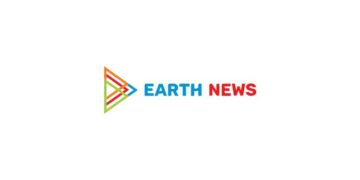Transforming Aircraft Maintenance: Embraer’s Adoption of 3D Inspection Technology
The aviation sector is constantly evolving, where accuracy is critical and safety standards are non-negotiable. In this context, technological advancements are essential for improving operational efficiency. Recently, Embraer, a prominent player in the aerospace field, has made a remarkable advancement by incorporating state-of-the-art 3D inspection technology into its aircraft maintenance protocols. This innovation not only aims to enhance the precision of inspections but also seeks to minimize aircraft downtime, ensuring they remain in optimal condition and ready for flight. This article examines the ramifications of this technological evolution and how 3D inspection could redefine maintenance practices at Embraer while potentially setting new industry benchmarks for safety and reliability.
Embracing Precision in Aircraft Maintenance with 3D Inspection
In an innovative stride forward, Embraer is revolutionizing aircraft maintenance through the implementation of 3D inspection technology. This sophisticated approach allows for accurate measurements and thorough evaluations of various aircraft components, guaranteeing compliance with rigorous safety and quality regulations. By leveraging advanced scanning techniques, maintenance teams can detect potential problems with unmatched precision—significantly lowering the risk of unnoticed damage or wear over time. The advantages associated with this modern methodology include:
- Superior accuracy: The capabilities offered by 3D technology ensure meticulous measurements.
- Increased efficiency: Shortened inspection durations lead to faster service turnaround times.
- Cost savings: Early identification of issues helps avoid expensive repairs and reduces downtime.
An example highlighting this technology’s impact can be seen as Embraer initiates trials on a select group of aircraft comparing conventional methods against their new 3D strategy. Preliminary results indicate a significant reduction in routine maintenance time alongside improved reliability during operations. The shift towards utilizing 3D inspections not only represents a technological advancement but also aligns with Embraer’s dedication to sustainability by enhancing lifecycle management practices for their fleet. Below is a comparative overview illustrating key distinctions between traditional methods versus those employing 3D inspection technology:
| Feature | Traditional Methods | 3D Inspection Technology |
|---|---|---|
| Dwell Time on Inspections | Takes longer due to manual processes | Dramatically reduced duration thanks to instant data access |
| Error Margin | Affected by human oversight | Pinnacle precision through advanced modeling techniques |
| Total Cost Implications |
Boosting Safety and Efficiency in Aircraft Maintenance with Visual Analytics Technology
The integration of cutting-edge visual analytics tools like 3D inspection marks an important milestone for Embraer as it enhances its aircraft maintenance procedures significantly. This advanced tool streamlines workflows while bolstering safety measures through high-resolution imaging that captures intricate details about various components within an aircraft structure. By adopting such innovative technologies early within the maintenance cycle, teams can identify potential concerns sooner rather than relying on traditional methods that may be labor-intensive or susceptible to human error.
- < strong >Immediate insights: Provides quick access to comprehensive visual data.< / li >
- < strong >Heightened accuracy: Aids in spotting irregularities often missed during standard assessments.< / li >
- < strong >Resource optimization: Minimizes downtime while reducing overall costs associated with upkeep.< / li >
< / ul >This transition towards sophisticated visual analytics cultivates an environment focused on continuous improvement within maintenance operations as technicians utilize detailed models for training purposes aimed at enhancing fault detection skills further down the line . Additionally , incorporating these technologies fosters better communication among team members since all parties involved can visualize information uniformly . Below is another comparison showcasing differences between traditional inspections versus those utilizing modernized approaches :
Feature< / th > Conventional Inspections< / th > Modernized Inspections< / th > Strategies For Successfully Integrating Advanced Inspection Techniques Into Aviation Operations
The successful incorporation Of advanced technologies like three-dimensional (or “three-D”) inspections requires careful planning throughout aviation-related activities . Initially , it’s vital To evaluate existing workflows thoroughly so that any shortcomings inherent In older methodologies become apparent . Such analyses will reveal specific benefits offered By adopting newer strategies including heightened levels Of precision , shortened timelines For evaluations And improved documentation practices overall .
Furthermore , engaging key stakeholders During transitions promotes collaboration which ultimately leads To smoother adaptations across departments involved . Training programs tailored specifically around these tools Are essential As well ; equipping staff With knowledge regarding Their use ensures readiness when implementing New systems .
Additionally establishing clear guidelines surrounding best practices related To three-D inspections Can greatly enhance both effectiveness And dependability moving forward . Outlining protocols covering regular equipment calibration along With maintaining integrity Within collected datasets Is crucial here too ! Creating feedback loops Where technicians share experiences While suggesting modifications Helps foster adaptability As changes arise Over time .
Lastly investing continuously In refining processes based On performance metrics Associated With outcomes from three-D inspections Will help celebrate successes Alongside optimizing overall operations positioning organizations At forefronts Of aviation-related innovations!
Final Thoughts
As we look ahead into An era characterized By rapid advancements And increased efficiencies Within Aviation sectors globally; It’s clear That embers’ adoption Of cutting-edge Three-dimensional (or “three-D”) Technologies Represents A pivotal moment For transforming How we approach Aircraft Maintenance Practices Today! Not only Does It Enhance Safety Standards But Also Sets New Benchmarks Across Industries At Large! Through Embracing These Innovations; They’re Not Just Keeping Up With Modern Demands But Actively Shaping Future Skies Ahead! Stakeholders Remain Vigilant Watching Developments Unfold Here; One Thing Stands Certain – Integrating Three-dimensional (or “three-D”) Technologies Marks A Significant Step Towards Achieving Greater Efficiency & Security Moving Forward Together!









